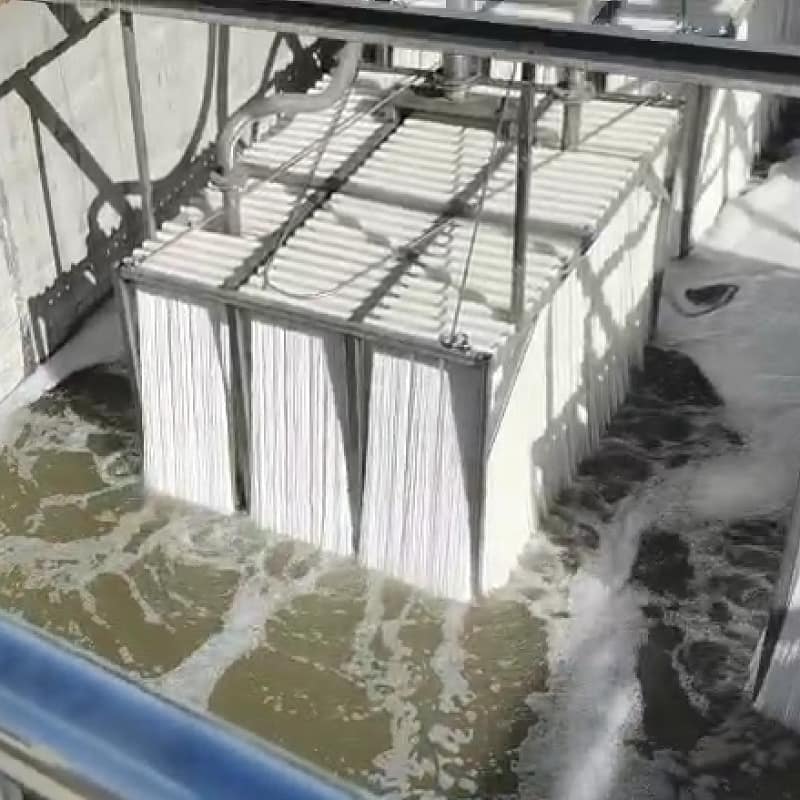Advantages of MBR Membrane in Brewery Wastewater Treatment
Brewery operations consume large volumes of freshwater and generate significant wastewater, especially during the brewing and bottling stages. With growing concerns over environmental impact and water reuse, the MBR membrane in brewery wastewater treatment has used as a superior solution, offering both environmental and operational benefits.
Challenges in Brewery Wastewater Management
Brewery wastewater is characterized by high organic load, variability in flow and composition, and excellent biodegradability. Common treatment technologies such as conventional activated sludge (CAS), anaerobic digesters, or combined systems are widely used. However, they often suffer from several limitations:
- Large footprint and complicated process design
- High capital and operational costs
- Sludge bulking issues due to low nitrogen/phosphorus levels
- Sensitivity to load variations, common in batch operations
MBR Membrane Technology: A Smarter Alternative
The Membrane Bioreactor (MBR) process integrates biological treatment with membrane filtration. Instead of relying on a secondary clarifier, the MBR membrane handles solid-liquid separation, ensuring much higher effluent quality.
Key Advantages of MBR Membrane in Brewery Wastewater Treatment
- Superior Effluent Quality: The membrane filtration removes suspended solids and turbidity to near zero. It also effectively retains pathogenic microorganisms. Unlike conventional systems, MBR isn’t affected by sludge bulking and can consistently produce high-quality effluent suitable for reuse.
- Compact Design with Smaller Footprint: Replacing the secondary clarifier with membrane modules greatly reduces the footprint. In addition, higher mixed liquor suspended solids (MLSS) concentrations are allowed, making the system even more space-efficient.
- Enhanced Nitrification Efficiency: MBR systems support extended sludge retention times (SRT), promoting the growth of slow-growing nitrifying bacteria. This leads to better nitrogen removal performance.
- Strong Resistance to Load Variations: Brewery wastewater discharge is often intermittent and variable. MBR systems provide excellent buffering due to high MLSS levels and effective membrane separation, maintaining stable effluent quality even with fluctuating influent.
- Reduced Sludge Production: Due to longer SRT, excess sludge generation is significantly lower than traditional biological treatment systems. This helps reduce sludge handling costs and lowers operational expenses.
- Flexible and Automated Operation: The separation of hydraulic retention time (HRT) and SRT allows greater flexibility in system design and operation. Combined with modern controls, MBR systems are easier to monitor and automate.
Real-World Application and Results
Many breweries worldwide, especially in regions with strict wastewater discharge or reuse standards, have successfully adopted MBR technology. Studies show that MBR-treated brewery wastewater can meet even the most stringent reuse requirements for non-potable applications like cleaning, cooling, or irrigation.
Conclusion
Adopting MBR membrane in brewery wastewater treatment offers breweries a reliable, cost-effective, and sustainable solution to address both regulatory and operational challenges. With its superior treatment performance, smaller footprint, and resilience to fluctuations, MBR is an ideal choice for modern breweries aiming for efficiency and environmental compliance.
Learn More
- 📘 How MBR Membranes Work
- 🔗 Wikipedia – Membrane Bioreactor
- 📞 Contact Us for more information or technical documentation on brewery wastewater treatment solutions.

